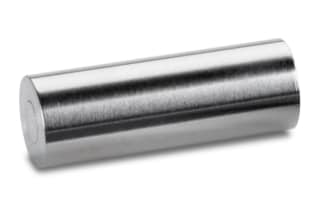
|
Chemistry |
C18 |
|
Separation Mode |
Reversed Phase |
|
Particle Substrate |
Hybrid |
|
pH Range Min |
2 pH |
|
pH Range Max |
11 pH |
|
Maximum Pressure |
6000 psi (415 Bar) |
|
Endcapped |
Yes |
|
Bonding Technology |
Shield RP18 |
|
Silanol Activity |
Low |
|
Particle Shape |
Spherical |
|
Particle Size |
3.5 µm |
|
Pore Size |
130 Å |
|
Format |
Sentry Guard Cartridge |
|
Surface Area |
185 |
|
System |
HPLC |
|
Particle Technology |
BEH |
|
USP Classification |
L1 |
|
Inner Diameter |
4.6 mm |
|
Length |
20 mm |
|
Carbon Load |
17 % |
|
UNSPSC |
41115709 |
|
Brand |
XBridge |
|
Product Type |
Guards |
|
Units per Package |
2 pk |

XBridge BEH Shield RP18 Sentry Guard Cartridge, 130Å, 3.5 µm, 4.6 mm X 20 mm, 2/pk
Sentry Guard Cartridges from Waters are frequently used to extend the life of HPLC columns by minimizing particle matter and chemical pollutants. There are two holder designs available: one for use as an integrated component of the Waters Cartridge Column with reusable end fittings, and the other for use with any HPLC Column; both designs allow Sentry Guard Cartridges to be replaced without the use of tools.
The XBridge BEH Shield RP18 columns and Sentry Guard Cartridges are a necessary and strong tool for HPLC method development, complementing the XBridge BEH C18 and C8 phases. In comparison to straight-chain alkyl columns, the integrated carbamate group in the bonded phase ligand gives alternate selectivity, especially for phenolic chemicals. Because of the 'Shield Technology,' the XBridge BEH Shield RP18 Sentry Guard Cartridge helps achieve extremely symmetrical and efficient peaks by reducing silanol interactions with basic analytes. The 'Shielding' effect, which results in enhanced peak shape, is caused by the deactivation of basic analytes.
With the XBridge BEH Shield RP18 Sentry Guard Cartridge, you can maximize particle efficiency while relying on the lab equipment to deliver unrivaled peak shape and peak capacity. The XBridge BEH Shield RP18 Sentry Guard Cartridge was created with efficiency in mind. Through the improved pH stability, you will also receive extended column lifetime and assay robustness through greater dependability.
Browse through our brochure or visit our website to review the extensive collection of all XBridge Columns available by Waters, and you easily shop for lab equipment as per your needs.
You may also want to check out the XBridge BEH Shield RP18 VanGuard Cartridge, 130Å, 3.5 µm, 3.9 mm X 5 mm, 3/pk; XBridge BEH Shield RP18 VanGuard Cartridges are used to extend analytical column lifetime and performance by removing particulate contamination from the mobile phase stream. This cartridge is optimized to protect all 4.6 mm I.D. XBridge BEH Shield RP18 analytical columns containing 3.5 µm sorbent particles.
Why Are Normal Phase Chromatography Retention Times So Difficult To Reproduce?
Variability in retention time in normal phase HPLC is caused by the considerable dependency of retention on the concentration of highly polar mobile phase elements, particularly water. Even in extremely apolar solvents, little amounts will always dissolve without the addition of water. Furthermore, because bare silica is particularly hygroscopic, water is absorbed on the surface. As a result, in a regular phase system, the water content is rarely controlled and might vary dramatically.